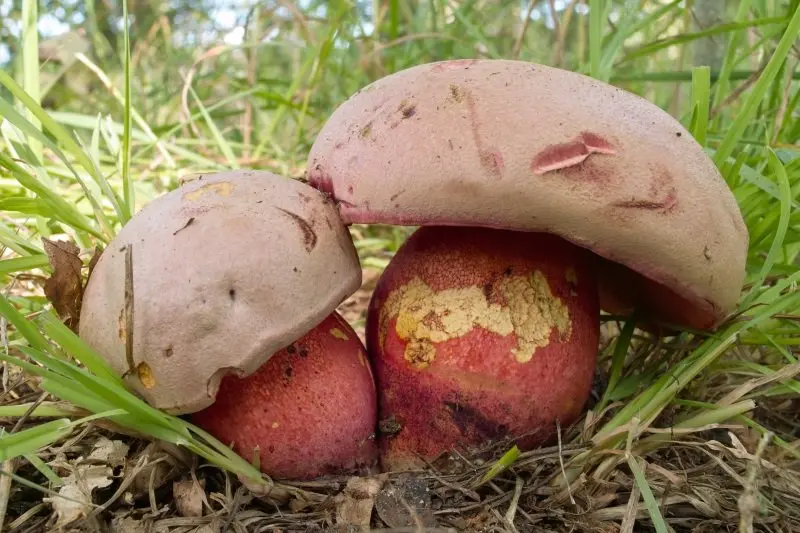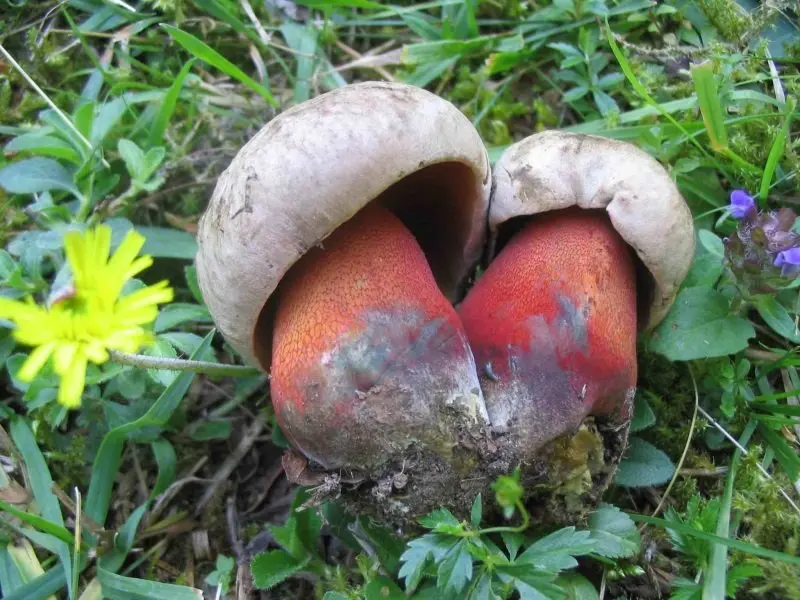Le Gal boletus (The legal red button)
- Division: Basidiomycota (Basidiomycetes)
- Subdivision: Agaricomycotina (Agaricomycetes)
- Class: Agaricomycetes (Agaricomycetes)
- Subclass: Agaricomycetidae (Agaricomycetes)
- Order: Boletales (Boletales)
- Family: Boletaceae (Boletaceae)
- Rod: Red mushroom
- Type: Rubroboletus legaliae (Le Gal boletus)

This is a poisonous representative of the Boletov family, which got its name in honor of the famous scientist mycologist Marseille le Gal. In -language literature, this mushroom is also known as “legal boletus”.
head boletus le gal has a characteristic pinkish-orange color. The surface of the cap is smooth, and the shape changes as the fungus grows – at first the cap is convex, and later becomes hemispherical and somewhat flattened. Hat sizes vary from 5 to 15 cm.
Pulp whitish or light yellow mushroom, turns blue at the cut site, has a pleasant mushroom smell.
Leg rather thick and swollen, 8 to 16 cm high and 2,5 to 5 cm thick. The color of the stem matches the color of the cap, and the upper part of the stem is covered with a reddish mesh.
Hymenophore accreted with a tooth to the leg, tubular. The length of the tubes is 1 – 2 cm. The pores are red.
Споры spindle-shaped, their average size is 13×6 microns. Spore powder olive-brown.
Borovik le Gal is widespread in Europe and occurs mainly in deciduous forests, where it forms mycorrhiza with oak, beech, and hornbeam. Prefers to grow in alkaline soils. Occurs in summer and early autumn.
This mushroom is poisonous and should not be used for food purposes.

Borovik le Gal belongs to the group of red-colored boletus, in which the flesh turns blue on the cut. Mushrooms from this group are very difficult to distinguish among themselves even for experienced mushroom pickers. However, it should be borne in mind that most of these mushrooms are quite rare and all belong to the class of poisonous or inedible. The following species belong to this group of boletus: Pink-skinned boletus (Boletus rhodoxanthus), False satanic mushroom (Boletus splendidus), Pink-purple boletus (Boletus rhodopurpureus), Wolf boletus (Boletus lupinus), Boletus satanoides, Purple boletus (Boletus purpureus)









